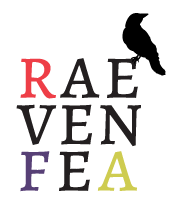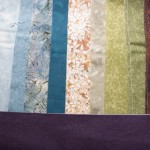Bargello Quilting
I’ve started taking a bi-weekly class on bargello quilting. I’m now two weeks in, with a pattern chosen and fabrics picked out. The class is structured so that we meet for an hour every other Monday, and then have homework in between. Last week’s homework was to finish picking out fabrics and get them washed and ironed before class this week. We also looked at different bargello designs and did a preliminary ordering of the fabrics to be discussed in class. While I’m eager to get started, I think the bi-weekly format will work great for allowing me to work on other projects and keep you all updated as well.
Defining bargello

Bargello patterning has its origins in needlework from 16th century Florence and Hungary. The term itself comes from works found in Bargello Palace in Florence. The style experienced a revival in the 1960s and has branched out to other media in the intervening years. Bargello quilting has been gaining popularity for over 15 years.
The style is classified by its gradated curves and points flowing through the design. The simplest bargello designs are simple curves or waves that repeat in different colors and patterns. Ambitious quilters create beautiful designs that incorporate multiple curves, broken curves, color shifting and many other alterations to the basic bargello curve.
Bargello quilting is strip-piecing, plain and simple. I’ll discuss it more once I begin piecing my quilt, but essentially, you create color runs by sewing strips of the different colors together horizontally. Once you’ve created your color runs, you cut vertical strips from them in different widths to create your curve. You end up with blocks of each fabric that are all the same height across the entire quilt, but in varying widths.
Our resources
Although you don’t particularly need a book to learn bargello quilting (hooray Internet), our instructor recommended two books (and required us to purchase at least one):
- Twist and Turn Bargello Quilts by Eileen Wright (2009)
- Bargello Quilts by Marge Edie (1994)
I started with Wright’s book, and ended up purchasing the other as well. While I love the curvy patterns of Wright’s quilts better, the descriptions in Edie’s book are more thorough. Wright’s does a good job of describing the basics and the steps to create her featured quilts, but Edie provides a wonderful description of how to create your own designs and how to modify them with advanced techniques for something more than simple curves. Looking ahead, Edie takes an odd approach to piecing the rows; she sews the rows to the batting while piecing the quilt together, rather than making the quilt top in one go, then sandwiching. I’m not sure which method we’ll be using, but Edie’s sounds like it will take some getting used to.
One thing of note: Wright is a fan of using many more fabrics than Edie. The majority of her designs call for 20 fabrics (one is even 24!), whereas Edie’s generally require somewhere around 12 (19 at the most).
A quick search on Amazon.com turns up many more books on Bargello Quilting if you’re interested in the subject.
My project thus far

After a lot of debate, I decided to do a twist on one of Edie’s quilts. The goal of the class is to create a wall hanging, but I’d like to create a project that can be used as a lap quilt instead of a wall hanging, depending on who I end up giving the final product to. Edie’s “Bye-Bye Blues” quilt is a decent size (52″x52″) for that flexibility.
I chose my fabrics before settling on a final pattern. I found this beautiful paisley of teals, greens, browns, tans and a highlight of gold, and took my color cues from it, coming up with a palette of browns, greens and blues—and a deep purple for a funky twist. The fabrics are a mix of batiks and prints with an overall floral texture theme.
I ended up with 18 different fabrics. I purchased a couple for other projects (mainly the wedding quilt), and ended up with leftovers (or didn’t use them). Two are reasonably reversible—providing a lighter shade—so I ultimately have 20, which is what the original pattern I chose from Wright’s book called for. The final pattern choice only needs 16—and 4 of those will be doubled, so the final fabric count is 12. I plan on adding the deep purple as a counter-curve through the design, so the total is actually a baker’s dozen.

Edie’s original pattern is a color shift from blue tones to brown ones. With my selection, I am planning on having the brown and beige rows span the quilt, but a gradual shift from blues to greens across the lighter section of the curves, with the purple inserted in place of other blocks for a contrasting curve. I’m thinking a good name for my quilt will be “Bye-Bye Blues… Hello Greens,” or is that too cliché?
Do you have experience with bargello quilting? Interested in learning more? Let me know what questions you want answered as I journal this quilt. This week’s homework is to get the strips cut (done) and sew the color runs together. I’ll document that process as I go. See you in two weeks!
This is part one in a multi-part series. Keep following along by subscribing to the RSS feed, or head over to part two now.


3 Responses to “Bargello Quilting”
Jen Damon
10:54 am | 02/08/11
How fun! I bought Edie’s book almost a year ago and could NOT wrap my head around the process- I finally “Just Did It” (this week!)and completed Project 1 (her placemants- the simplest and most straightforward). Of course, I now think I’m an expert- and am now trying to design my own ‘curve’ for a straightforward, bigger project and it’s fraught w/ issues- small dips on a line, translate to an abundance of 1/4′ strips! Working on it now- but, already picked my fabrics- love the fabric blending- and a chance to ‘tame’ big-prints!
raevenfea
10:55 am | 02/08/11
I think the three you mentioned are my favorite ones in this selection! I used the blue/brown mix in another quilt too. Or well, am using… I have the pieces cut out, but am far from finished sewing it together.
Jen Damon
10:54 am | 02/08/11
PS- Your ’5th batik from the left’- a blue/brown mix is in my fabric selection, too! I’ve used the ‘far-right’ piece in other projects! (and the 2nd from the right in two!- love how the brown has a seude-like appearance when large, and a deep brownish-black when cut to smaller-size!). You must have good taste!